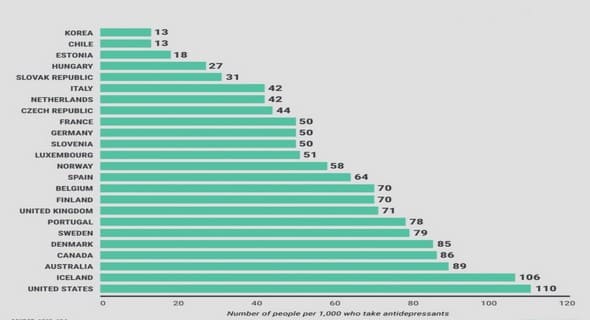(Downloads - 0)
For more info about our services contact : help@bestpfe.com
Table of contents
Introduction
Chapter I Background and Literature Review
I.1 Pharmaceutically active compounds
I.1.1 General information on pharmaceutically active compounds
I.1.2 Occurrence of PhACs in surface water
I.1.3 Occurrence of PhACs in sewage treatment plant effluents
I.2 Reverse osmosis process for wastewater reclamation
I.2.1 General information on reverse osmosis process
I.2.2 Rejection capacity of reverse osmosis membrane for micropollutants
I.2.3 RO membrane fouling
I.2.3.1 Membrane foulants and fouling type
I.2.3.2 RO membrane fouling mechanisms
I.2.3.3 Fouling behaviour of RO membrane for municipal wastewater reuse
I.2.4 Characteristics and disposal of RO concentrate
I.2.4.1 Characteristics of RO concentrate
I.2.4.2 Occurrence of PhACs in RO concentrate
I.2.4.3 Recirculation of RO concentrate into the biological unit
I.2.4.4 Treatment of RO concentrate by advanced oxidation processes
I.3 Ozonation application for decontamination of PhACs
I.3.1 Ozone decomposition and the formation of hydroxyl radicals
I.3.2 Expected attack site of micropollutants towards ozone
I.3.3 Micropollutants decontamination in wastewater by ozonation
I.3.4 Impact of water matrix on the degradation of PhACs by ozonation
I.3.4.1 Effect of scavengers
I.3.4.2 Impact of organic matters and alkalinity on ozone lifetime
I.3.5 Formation and toxicity of transformation products
I.4 Urine wastewater
I.4.1 Characteristics of source-separated urine
I.4.2 Occurrence of PhACs in source-separated urine
I.4.3 Urine valorisation and treatment of source-separated urine
I.4.3.1 Struvite precipitation
I.4.3.2 Reverse osmosis process
I.4.3.3 Ozonation process
I.5 Summary of literature review
Chapter II Materials and Methods
II.1 Target micropollutants
II.1.1 Properties of the target micropollutants
II.1.2 Preparation of stock solution of the target micropollutants
II.2 Description of RO process
II.2.1 RO membrane used
II.2.2 Dead-end RO cell configuration
II.2.3 Cross-flow RO pilot
II.2.4 RO process parameters
II.2.5 Saturation index calculation
II.3 Semi-batch ozonation
II.3.1 Description of ozonation pilot
II.3.2 Concentration profile of ozone in ultra-pure water and mass balance of ozone
II.3.2.1 Mass balance of ozone in the gaseous and liquid phase
II.3.2.2 Rate constant of ozone self-decomposition
II.3.2.3 Volumetric mass-transfer coefficient
II.3.3 Ozone dose
II.3.4 Ozone solubility in the ionic solution
II.4 Analysis of chemicals
II.4.1 pH and conductivity
II.4.2 Dissolved organic carbon and dissolved inorganic carbon
II.4.3 Chemical oxygen demand
II.4.4 Ions analysis
II.4.5 Ultraviolet absorbance
II.4.6 Size-exclusion high performance liquid chromatography
II.4.7 Polysaccharides and proteins
II.4.8 Micropollutants
Chapter III Combining RO and ozonation process for municipal wastewater reuse: RO membrane fouling and emerging micropollutants removal
Introduction
III.1 Experimental protocols
III.2 Characteristics of MBR permeate
III.3 RO performance with RO concentrate recirculation to MBR (Set 1)
III.3.1 MBR-RO process with RO concentrate recycling
III.3.2 Characteristics of MBR permeate produced before and during RO concentrate recycling
III.3.3 Influence of RO concentrate recycling on RO retention capacity for NPOC, COD and ions 66
III.3.4 Influence of RO concentrate recycling on RO membrane fouling propensity
III.3.4.1 RO membrane fouling in terms of RO permeate flux decline
III.3.4.2 Impact of osmotic pressure gradient of salts on RO permeate flux decline
III.3.4.3 Scaling potential analysis based on saturation index model
III.3.4.4 Organic fouling potential analysis
III.3.5 Influence of RO concentrate recycling on the retention capacity for PhACs
III.3.6 Conclusions on the impacts of RO concentrate recycling to MBR on RO performance
III.4 Removal of micropollutants by RO process combining ozonation (Set 2)
III.4.1 RO retention capacity for micropollutants
III.4.2 Removal efficiency of PhACs from RO concentrate by ozonation
III.4.3 Removal efficiency of organic matters from RO concentrate by ozonation
III.4.4 Conclusions on performance of RO process + ozonation for PhACs removal
III.5 Conclusions of this chapter
Chapter IV Effect of water matrix on the mechanisms and performance of ozonation for micropollutants removal
Introduction
IV.1 Experimental protocols
IV.1.1 Preparation of organic matter-free solutions spiked with CBZ and KET
IV.1.2 Real urine collection and pre-treatment
IV.1.3 Ozonation operating conditions
IV.2 Ozonation kinetic regime and ozone mass transfer
IV.2.1 Mass transfer with chemical reactions
IV.2.2 Mass balance of ozone with chemical reactions
IV.3 Investigation of the oxidation mechanism of CBZ and KET
IV.4 Impacts of solution matrix on the efficiency of PhACs removal by ozonation
IV.4.1 Ozonation of CBZ and KET in saline solution and synthetic urine
IV.4.2 Ozonation of CBZ in real urine
IV.4.3 Variation of the concentration of ionic salts and N-NH4+
IV.4.4 Comparison of removal efficiencies of CBZ and KET in the different matrix
IV.5 Effect of water matrix on ozonation consumption and kinetic regimes
IV.5.1 Hatta number and enhancement factor
IV.5.2 Ozone effectiveness yield
IV.6 Conclusions of this chapter
Chapter V A combination process of struvite precipitation, reverse osmosis and ozonation for the reclamation of source- separated urine: nutrient valorisation and micropollutants removal
Introduction
V.1 Description of the treatment line
V.1.1 Characteristics of urine-based solutions and the target PhACs spike
V.1.2 Struvite precipitation
V.1.3 Dead-end RO filtration
V.1.4 Ozonation experiment
V.2 Recovery of P nutrient from urine-based solutions as struvite crystals
V.2.1 Identification of crystals
V.2.2 Removal of P by struvite precipitation
V.2.3 Removal of organic compounds during struvite precipitation
V.3 RO performance for urine treatment
V.3.1 Retention capacity of RO membrane for target micropollutants
V.3.2 Retention efficiencies for ionic species
V.3.3 Variation of RO permeate flux versus RO permeate volume
V.4 Ozonation of the urine-based solutions
V.4.1 Ozonation efficiencies of real urine
V.4.1.1 Ozonation of HUM-1
V.4.1.2 Ozonation of HUM-2
V.4.1.3 Ozonation of HUM-3 RO concentrate and HUM-3 RO permeate
V.4.1.4 Ozonation of SUM-RO concentrate and -RO permeate
V.4.2 Ozone kinetic regimes and ozone consumption during the ozonation of real urine
V.5 Comparison of P recovery and PhACs removal from source-separated urine by the combination process
V.6 Conclusions of this chapter
Conclusions and Future research
REFERENCES
Appendix




